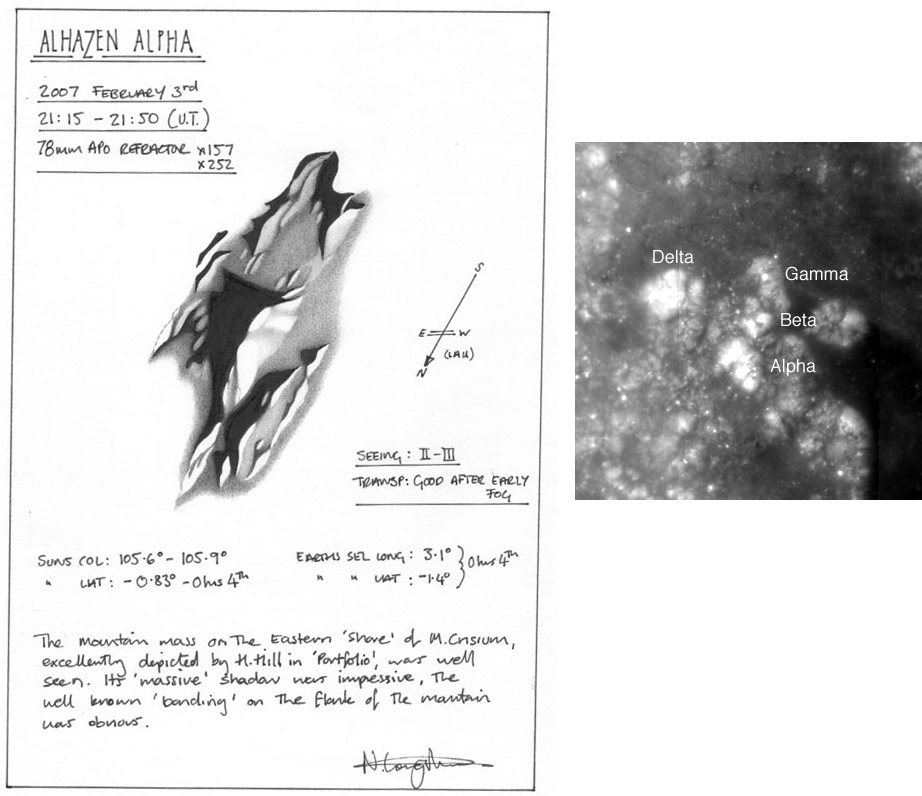
drawing by Nigel Longshaw, Manchester, UK
Sometimes a lunar target of interest is huge - like the dark rim around Mare Serenitatis - and sometimes it is small. Even quite small, as in a single mountain peak. Nigel used a 3″ refractor to draw the peak Alhazen Alpha on the eastern shore of Mare Crisium. Both his instrument and his technique harken back to observers 100-150 years ago who made detailed drawing of single features of interest. Why is Alhazen Alpha of interest? Because it has dusky bands that radiate down its bright flanks. In Harold Hill’s classic A Portfolio of Lunar Drawings there are three drawings of the peak. In Nigel’s drawing, two bands are clearly seen, as is the peak’s massive shadow. In the Clementine image I have labelled the bright peak Alpha, as well as Beta and Gamma (letters given by Hill) and the massive Delta (a designation I just bestowed). Nigel’s drawing shows Alpha and Beta. The dusky bands may be places where relatively fresh landslides have not occurred. Newly exposed material is often bright, but over time becomes darkened by solar radiation. And why are these peaks there? Paul Spudis maps them as being part of the 740 km wide Crisium basin ring that passes near Cleomedes and Proclus. What fun!
CORRECTION: The peaks identified in the Clementine image are not the ones drawn by Nigel. A correct mapping will be in the Feb 20 LPOD.
Related Links:
An Apollo view
COMMENTS?
Click on this icon File:PostIcon.jpg at the upper right to post a comment.



